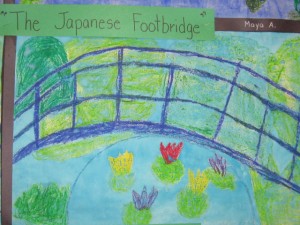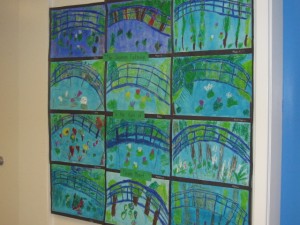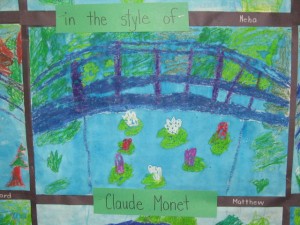Last week we took a close look at some of the paintings by a wonderful French Impressionist painter – Claude Monet. We saw photos of his actual garden in France (which has been maintained as a heritage site) and then we looked at a number of paintings that he did of that garden. Monet painted many pictures of the same scene at different times of the day to show how the light altered the look of the different paintings. Monet had a fondness for his pond with its water lillies – and, of course, his footbridge.

Students began with a simple pencil sketch of the bridge which they then went over with a thick layer of blue oil pastel. Using various colours of green oil pastels they then added a collection of trees, bushes, and shrubs on the sides of the ‘pond’ area and behind the bridge. They needed to colour the ones behind the bridge in between the bridge supports and not colour on top of the blue bridge. The last part that students used the oil pastels for was the addition of green lily pads with coloured lillies attached. Students were encouraged to add one white lily even though this was hard to see on the white paper.
The next day students did a paint ‘wash’ over the entire picture using either a light or dark blue paint disc. Students noticed that the paint coloured in between the oil pastels and did not stick well to the pastels. The overall effect is quite stunning – don’t you agree?


